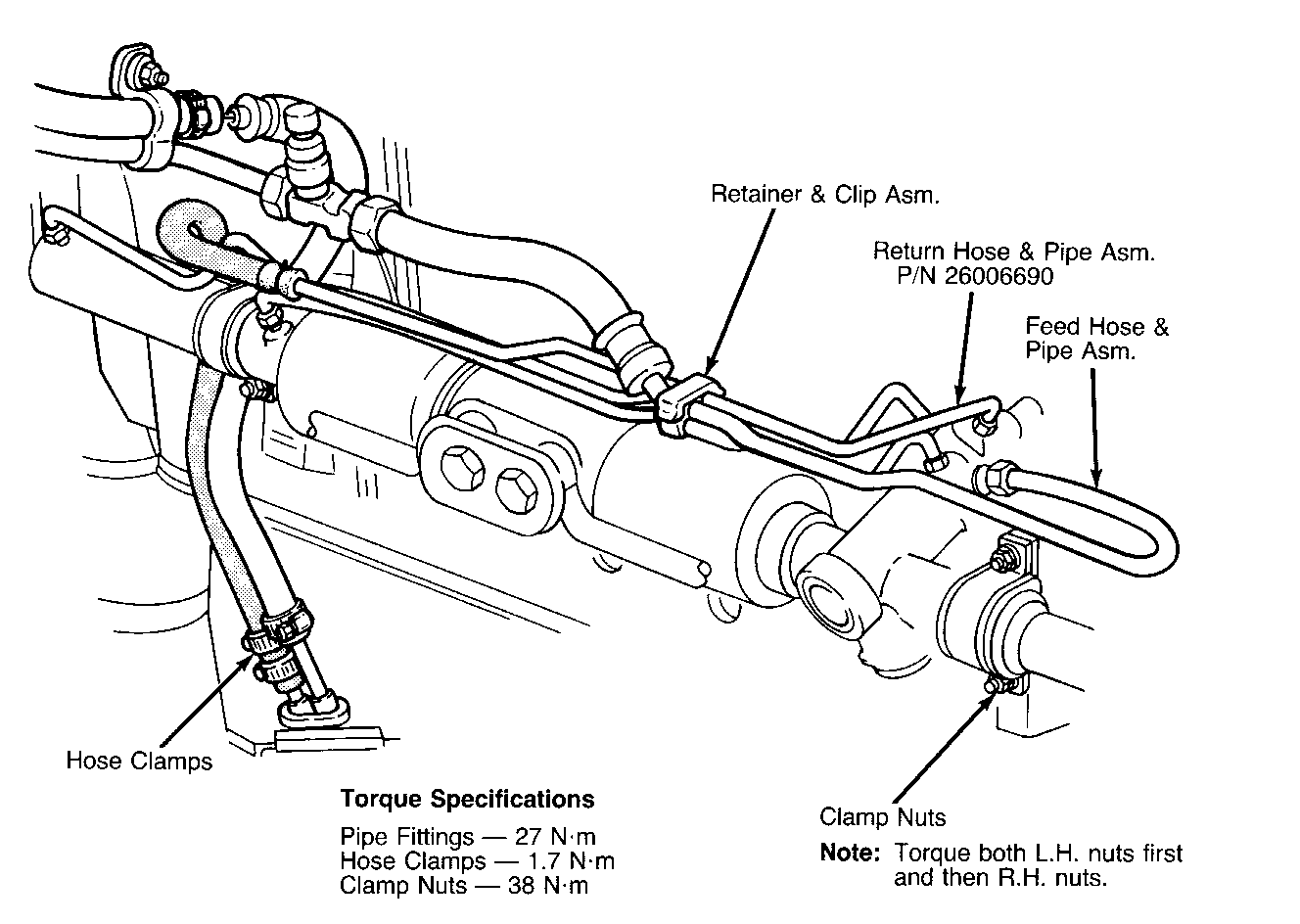POWER STEERING SHUDDER RETURN HOSE & PIPE ASSEMBLY

VEHICLES AFFECTED: 1987-89 L CAR W/2.8 (VIN W)
Some 1987-89 "L" cars with 2.8L V-6 engines may exhibit a slight power steering shudder condition apparent during low speed turning maneuvers. This condition may be perceived by the vehicle operator as a vibration felt in the vehicle steering wheel.
Vehicles exhibiting this condition may be repaired by replacing the existing power steering outlet (return) hose and pipe assembly with new assembly, P/N 26006690 with internal tuning cable.
Service Procedure:
1. Prep vehicle.
2. Raise vehicle.
3. Disconnect outlet (return) hose and pipe assembly at cooler and drain fluid.
4. Remove left front wheel and tire assembly.
5. Remove both tie rod/engine wheel well splash shields.
6. Lower vehicle half way down.
7. Loosen clamp nuts securing steering gear to dash panel and position gear forward to provide additional access to line fittings on steering gear.
8. Disconnect inlet (pressure) and then outlet (return) line fittings at steering gear.
9. Disconnect outlet (return) hose and pipe assembly from pipe retainer/clip and remove assembly through left wheel well opening.
10. Discard removed assembly.
11. Plug hose end of new hose and pipe assembly, P/N 26006690, and install assembly in vehicle through left wheel well opening. Assembly must be routed behind brake booster and be positioned as shown in attached illustration.
12. Connect outlet (return) and then inlet (pressure) fittings to steering gear torquing fittings to 27 N.m.
IMPORTANT: Inspect to insure 0-rings are present on fittings prior to connecting to gear.
13. Tighten and torque both left steering gear clamp nuts and then right nuts to 38 N.m.
14. Install pipe retainer and clip.
15. Install tie rod/engine wheel well splash shields.
16. Connect hose to cooler pipe and torque clamps to 1.7 N.m.
17. Install wheel and tire assembly and lower vehicle.
18. Fill with fluid and bleed power steering system following applicable shop manual procedure (Section 3B3).
IMPORTANT: After bleeding of system, insure fluid level is at the "Hot" mark after system has been stabilized at its normal operating temperature.
19. Check for leaks, correct as required and bleed system.

General Motors bulletins are intended for use by professional technicians, not a "do-it-yourselfer". They are written to inform those technicians of conditions that may occur on some vehicles, or to provide information that could assist in the proper service of a vehicle. Properly trained technicians have the equipment, tools, safety instructions and know-how to do a job properly and safely. If a condition is described, do not assume that the bulletin applies to your vehicle, or that your vehicle will have that condition. See a General Motors dealer servicing your brand of General Motors vehicle for information on whether your vehicle may benefit from the information.
